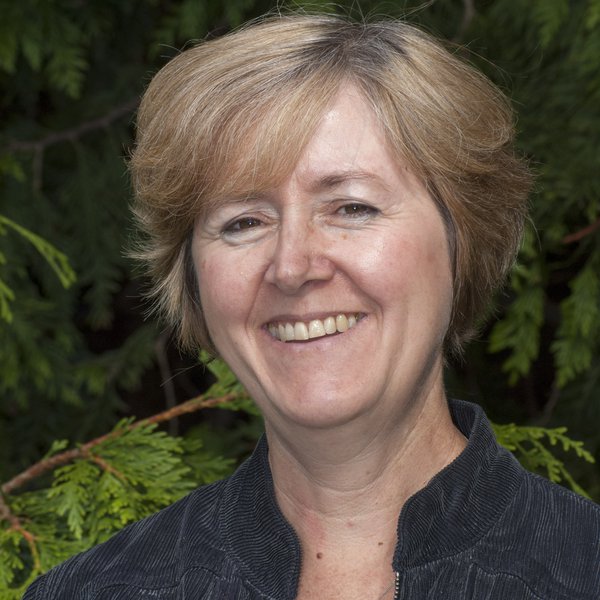Debra Frederickson Matika
BSc, PhD
BSc, PhD

Forest Research
Northern Research Station
Roslin
Midlothian EH25 9SY
UK
D.E. Frederickson Matika & G. Loake (2014). Redox Regulation in Plant Immune Function. Antioxidants & Redox Signaling 21: 1373-1388.
S. Pazoutov, M. Kolarík, G.N. Odvody, D.E. Frederickson, J. Olsovska & P. Man. (2008). A new species complex including Claviceps fusiformis and Claviceps hirtella. Fungal Diversity 31: 95-110.
S. Pazoutova, G.N. Odvody & D.E. Frederickson (2005). Ergot Fungus Claviceps cynodontis found on the Bermuda grass (Cynodon dactylon) in the Americas. Canadian Journal of Plant Pathology 27: 541-546.
S. Pazoutova & D.E. Frederickson (2005). Genetic Diversity of Claviceps africana on Sorghum and Hyparrhenia. Plant Pathology 54: 749-763.
D.E. Frederickson & G.N. Odvody (2003). Inhibition of Germination of Sphacelial Conidia of Claviceps africana following treatment of Seed-Sphacelia Admixtures with Captan. Crop Protection 22: 95-98.
S. Pazoutova, R. Bandyopadhyay, D. E. Frederickson, P.G. Mantle & R.A. Frederiksen (2000). Relations Among Sorghum Ergot Isolates from the Americas, Africa, India and Australia. Plant Disease 84: 437-442.
D.E. Frederickson, E.S. Monyo, S.B. King, G.N. Odvody & L.E. Claflin (1998). Identification of Pseudomonas syringae, the Cause of Foliar Leafspots and Streaks on Pearl Millet in Zimbabwe. Journal of Phytopathology 147: 701-706.
R. Bandyopadhyay, D.E. Frederickson, N.W. McLaren, G.N. Odvody & M.R. Ryley (1998). Ergot Disease, a New Threat to Sorghum in the Americas and Australia. Plant Disease 82: 356-367.
D.E. Frederickson, E.S. Monyo, S.B. King & G.N. Odvody (1997). A Disease of Pearl Millet in Zimbabwe caused by Pantoea agglomerans. Plant Dis. 81: 959.
D. E. Frederickson & K. Leuschner (1997). The Potential Use of Benomyl for the Control of Ergot (Claviceps africana) in Sorghum A-lines in Zimbabwe. Plant Dis. 81: 761-765.
D.E. Frederickson & P.G. Mantle (1996). Pearl Millet as an Alternate Host of the Sorghum Ergot Pathogen, Claviceps africana. ISMN 37: 83-85.
R. Bandyopadhyay, D.E. Frederickson, N.W. McLaren, & G.N. Odvody (1996). Ergot, a Global Threat to Sorghum. ISMN 37: 1-32 (includes colour supplement for farmers).
D.E. Frederickson, P.G. Mantle & W.A.J. de Milliano (1994). Susceptibility to Ergot in Zimbabwe of Sorghums that Remained Uninfected in their Native Climates of Ethiopia and Rwanda. Plant Pathol. 43: 27-32.
D.E. Frederickson, P.G. Mantle & W.A.J. de Milliano (1993). Windborne Spread of Ergot Disease (Claviceps africana) in Sorghum A-lines in Zimbabwe. Plant Pathol. 42: 368-377.
D.E. Frederickson, P.G. Mantle & W.A.J. de Milliano (1991). Claviceps africana sp.nov.; the Distinctive Ergot Pathogen of Sorghum in Zimbabwe. Mycol. Res. 95: 1101-1107.
D.E. Frederickson, P.G. Mantle & W.A.J. de Milliano (1989). Secondary Conidiation of Sphacelia sorghi on Sorghum, a Novel Factor in the Epidemiology of Sorghum Ergot Disease. Mycol. Res. 93: 497-502.
D.E. Frederickson & P.G. Mantle (1988). Path of Infection of Sorghum by Claviceps sorghi. Physiol. & Molec. Pl. Pathol. 33: 221-234.